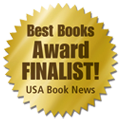- Beyond the Headlines: Stay Informed with Curated Global Updates & Expert Analysis
- The Importance of Diverse Sources
- Navigating the Digital Landscape
- The Rise of Deepfakes and AI-Generated Content
- The Role of Expert Analysis
- Understanding Media Bias
- Beyond the Headlines: Cultivating a Critical Mindset
Beyond the Headlines: Stay Informed with Curated Global Updates & Expert Analysis
In today’s rapidly changing world, staying informed is more crucial than ever. The sheer volume of information available can be overwhelming, making it difficult to discern credible sources from misinformation. Access to reliable, curated updates and insightful analysis is essential for individuals seeking to understand complex events and make informed decisions. This is where a commitment to thorough reporting and objective journalism plays a vital role, providing the public with the information they require to navigate an increasingly intricate global landscape. The constant stream of news requires a discerning approach to consumption and evaluation.
This article aims to provide a comprehensive overview of how to effectively stay informed, focusing on the importance of diverse sources, critical thinking, and the role of expert analysis. We will explore strategies for distinguishing fact from fiction, identifying bias, and understanding the broader context of current events. Ultimately, understanding these principles empowers individuals to become active and engaged citizens, capable of making well-informed judgments about the world around them.
The Importance of Diverse Sources
Relying on a single source of information can create a distorted view of reality. Different news outlets often have varying perspectives, biases, and reporting priorities. Diversifying your sources ensures a more well-rounded understanding of events. This doesn’t mean blindly accepting every piece of information you encounter, but rather actively seeking out multiple viewpoints to form your own informed opinion. Consider perspectives from international media, independent journalists, and think tanks alongside traditional news organizations.
Furthermore, the rise of social media presents both opportunities and challenges. While social platforms can provide access to breaking updates, they are also prone to the spread of misinformation. It’s crucial to verify information posted on social media with reputable sources before accepting it as truth. Actively seek out primary sources, such as government reports, academic studies, and official statements, whenever possible.
| Established News Organizations (e.g., Reuters, Associated Press) | Generally high | May exhibit editorial slant |
| Independent Investigative Journalists | Often high, requires vetting | Can be politically motivated |
| Government Publications | High for factual data | May present a favorable self-image |
| Social Media | Very low, requires verification | High potential for misinformation |
Navigating the Digital Landscape
The internet has fundamentally changed the way we consume information. However, this access comes with the responsibility of being a critical consumer. Algorithms often prioritize engagement over accuracy, creating ‘filter bubbles’ that reinforce existing beliefs. Learning to identify fake news, propaganda, and disinformation is critical. This requires careful examination of the source, the author’s credentials, and the supporting evidence.
Fact-checking websites play a vital role in debunking false or misleading claims. Organizations like Snopes, PolitiFact, and FactCheck.org conduct thorough investigations to verify the accuracy of information circulating online. Utilize these resources to corroborate claims and identify potential falsehoods. Be wary of sensational headlines, emotionally charged language, and claims that seem too good (or too bad) to be true.
The Rise of Deepfakes and AI-Generated Content
The emergence of deepfake technology presents a new challenge to information integrity. Deepfakes are manipulated videos or audio recordings that convincingly portray someone saying or doing something they never did. These fabricated materials can be used to spread misinformation, damage reputations, and sow discord. The increasing sophistication of AI-generated content, including text and images, further complicates the task of verifying information sources. Awareness of these technologies is the first step in defending against their potentially harmful effects. Being skeptical, especially of videos and audio content that seem unusual, is paramount. Evaluating the background and source is crucial to discern authenticity. The content might be convincingly designed, yet having little to no substance and is difficult to confirm the validity.
- Always verify information with multiple sources.
- Be skeptical of sensational headlines.
- Check the author’s credentials and reputation.
- Use fact-checking websites.
- Be aware of deepfakes and AI-generated content.
The Role of Expert Analysis
While staying informed about current events is important, understanding the underlying context requires expert analysis. Experts in fields such as political science, economics, and international relations can provide valuable insights into the complex issues shaping our world. Seeking out analyses from reputable think tanks, academic institutions, and subject matter experts can enhance your comprehension of current events.
However, it’s important to remember that even experts can have biases or limitations. Consider the expert’s background, funding sources, and potential conflicts of interest. Look for analyses that present a balanced perspective, acknowledging multiple viewpoints and competing interpretations. Read beyond the headlines and immerse yourself in in-depth reporting and commentary.
- Identify experts in relevant fields.
- Consider their credentials and affiliations.
- Look for balanced and nuanced analyses.
- Be aware of potential biases.
- Seek out diverse perspectives.
Understanding Media Bias
All media outlets exhibit some form of bias, whether intentional or unintentional. Recognizing the different types of bias is crucial for interpreting information accurately. Political bias is perhaps the most common, with outlets often leaning left or right on the political spectrum. However, other forms of bias, such as confirmation bias (seeking out information that confirms existing beliefs) and sensationalism (emphasizing dramatic or shocking events), can also distort reporting.
Understanding the ownership structure of media companies can provide insights into their potential biases. For example, a media outlet owned by a large corporation might be more likely to favor policies that benefit that corporation. It’s also important to be aware of the influence of advertising revenue on editorial content. Critical media literacy involves recognizing these biases and actively seeking out information that challenges your own perspectives.
| Political Bias | Favoring a particular political ideology | A news outlet consistently endorsing conservative candidates |
| Confirmation Bias | Seeking information that confirms existing beliefs | Only reading news sources that align with your views |
| Sensationalism | Emphasizing dramatic or shocking events | Headlines focusing on fear and outrage |
| Corporate Bias | Favoring the interests of the owning corporation | A media outlet avoiding negative coverage of its parent company |
Beyond the Headlines: Cultivating a Critical Mindset
Staying informed is not simply about consuming information; it’s about cultivating a critical mindset. This involves questioning assumptions, evaluating evidence, and forming independent judgments. Don’t accept information at face value. Ask yourself who created the information, what their motives might be, and whether the evidence supports the claims being made. Actively seek out diverse perspectives and be willing to challenge your own beliefs.
In a world saturated with information, the ability to think critically is more valuable than ever. Embrace intellectual humility, recognizing that you don’t have all the answers. Be open to changing your mind in light of new evidence. By cultivating a critical mindset, you can navigate the complexities of the modern world and become a more informed and engaged citizen. Taking the time to check one’s own assumptions, biases, and beliefs is one of the key foundations in making rational decisions.
The pursuit of knowledge and understanding is a continuous journey. By employing the strategies outlined in this article, you can elevate your news consumption, cultivate a critical mindset, and become a more informed and empowered individual.






